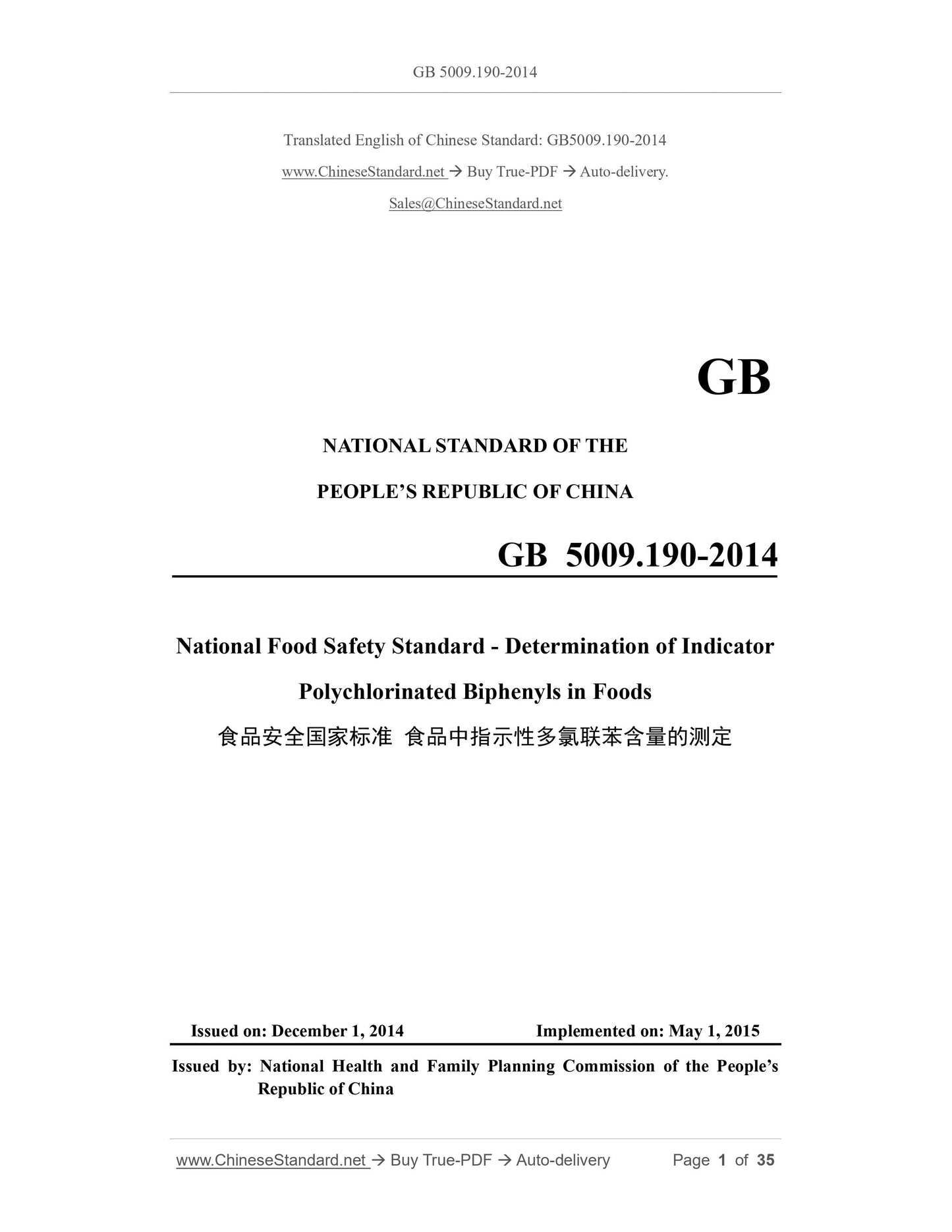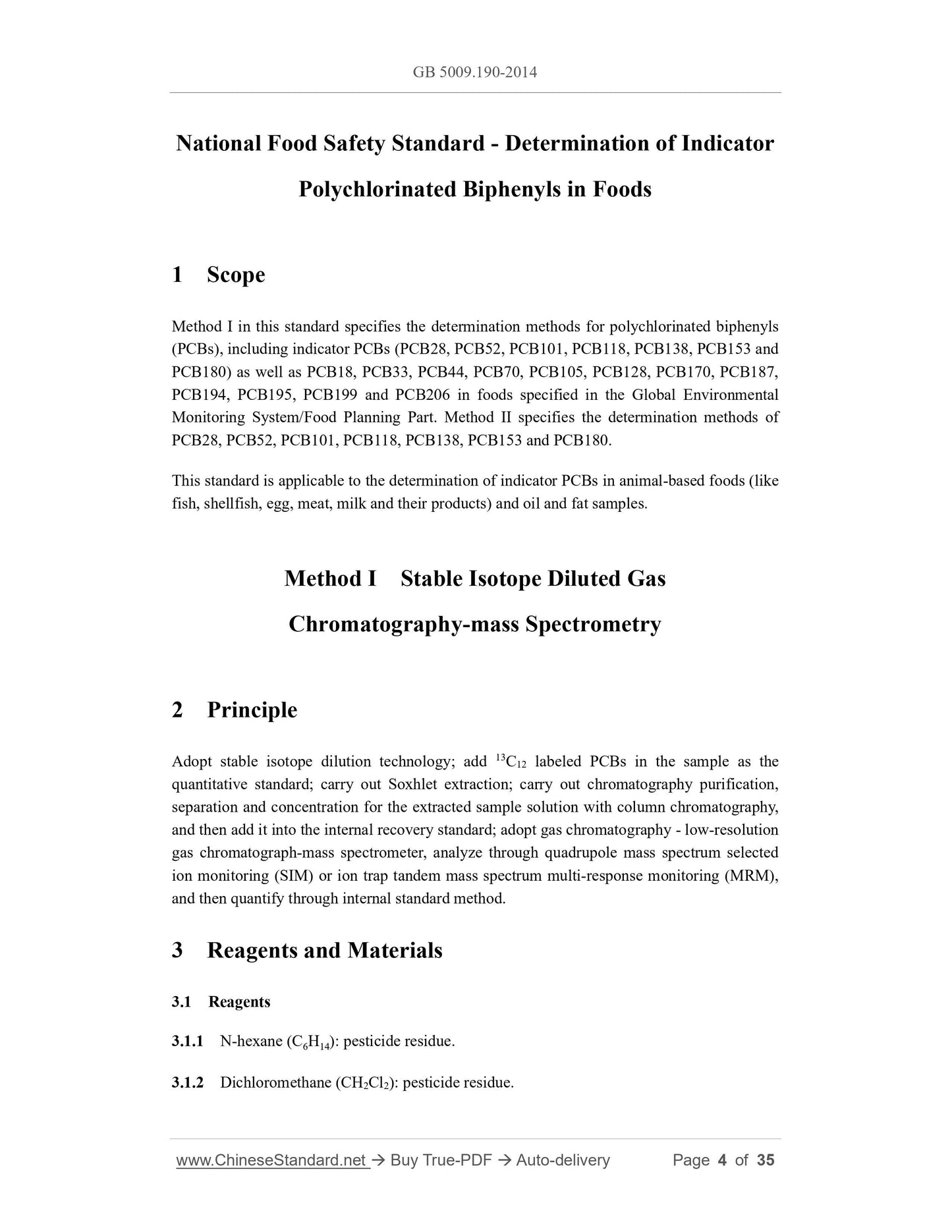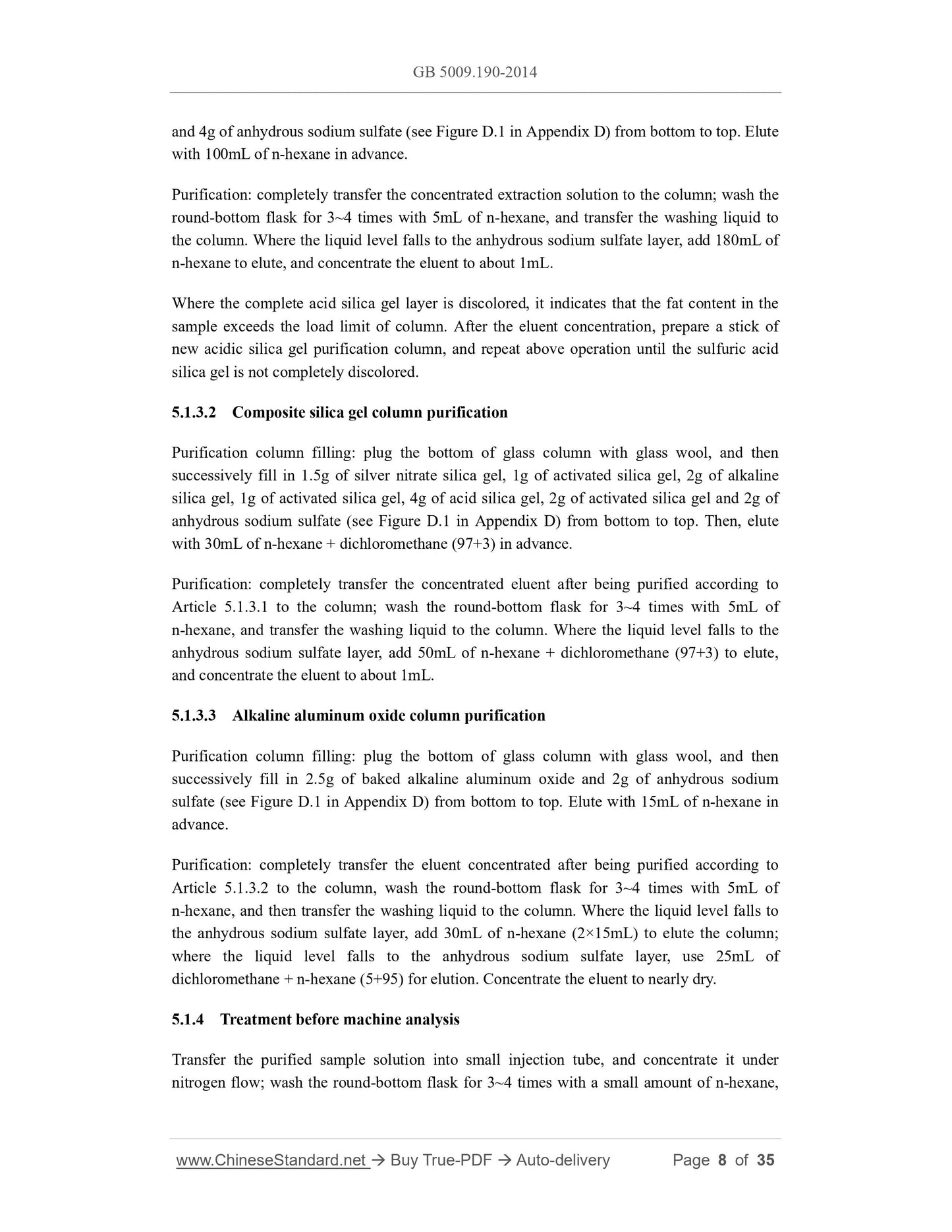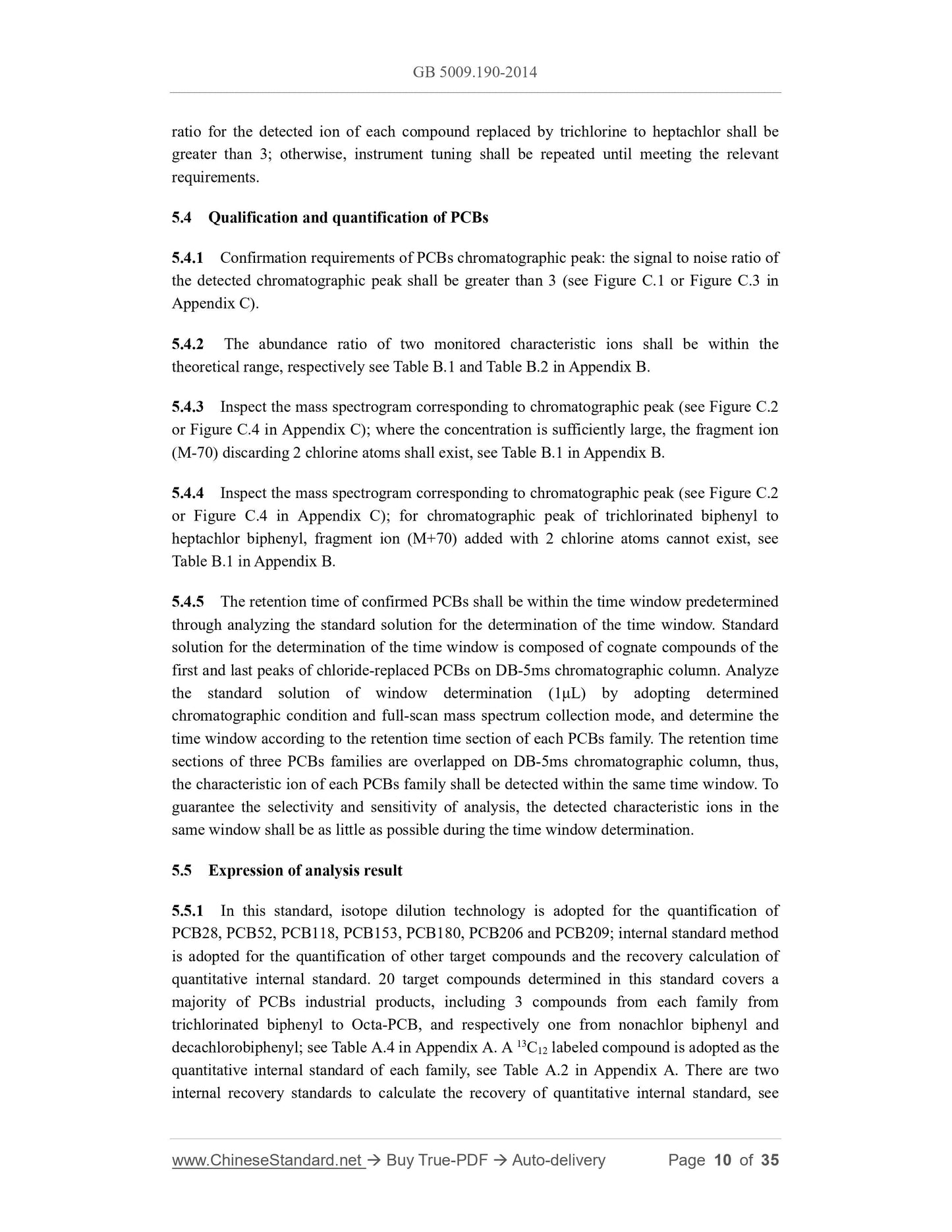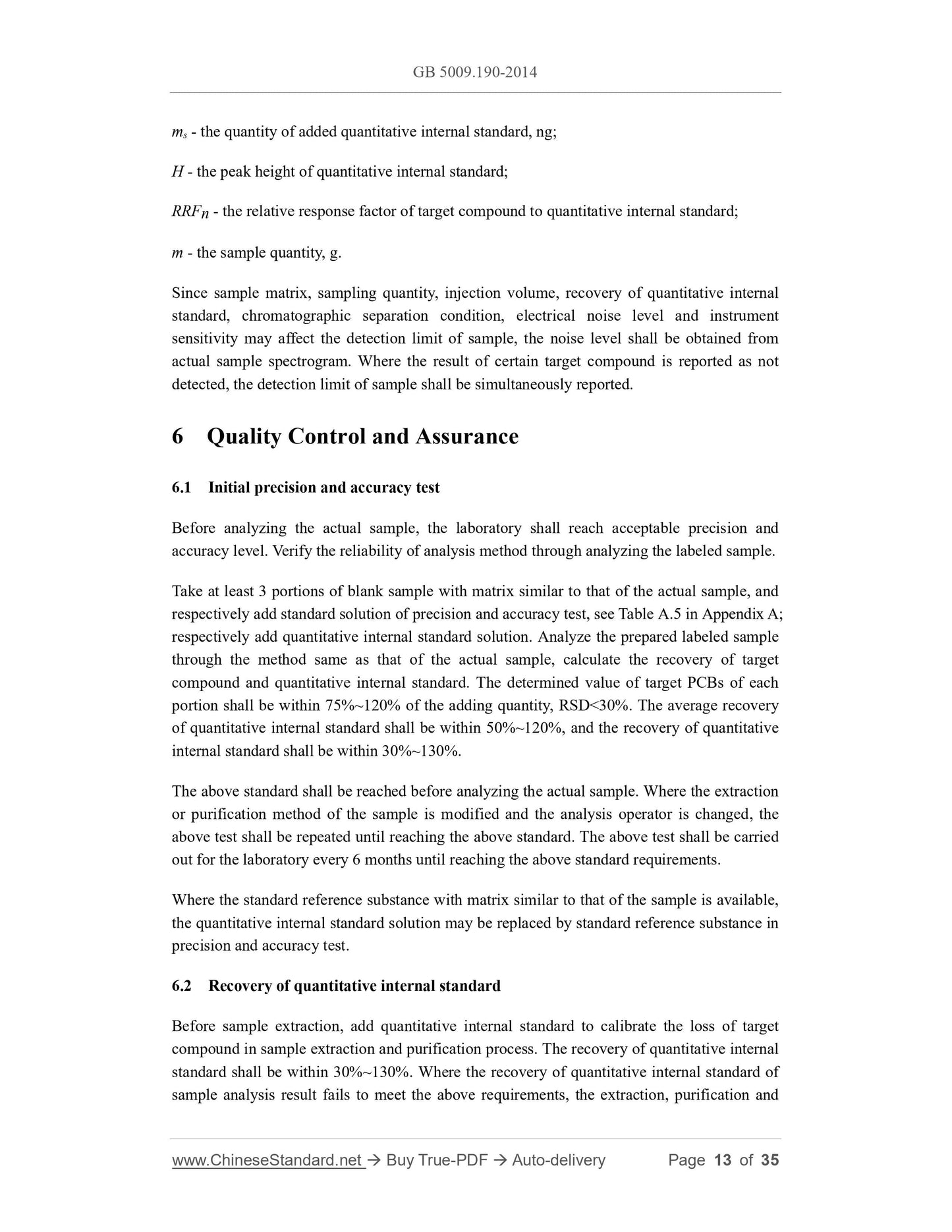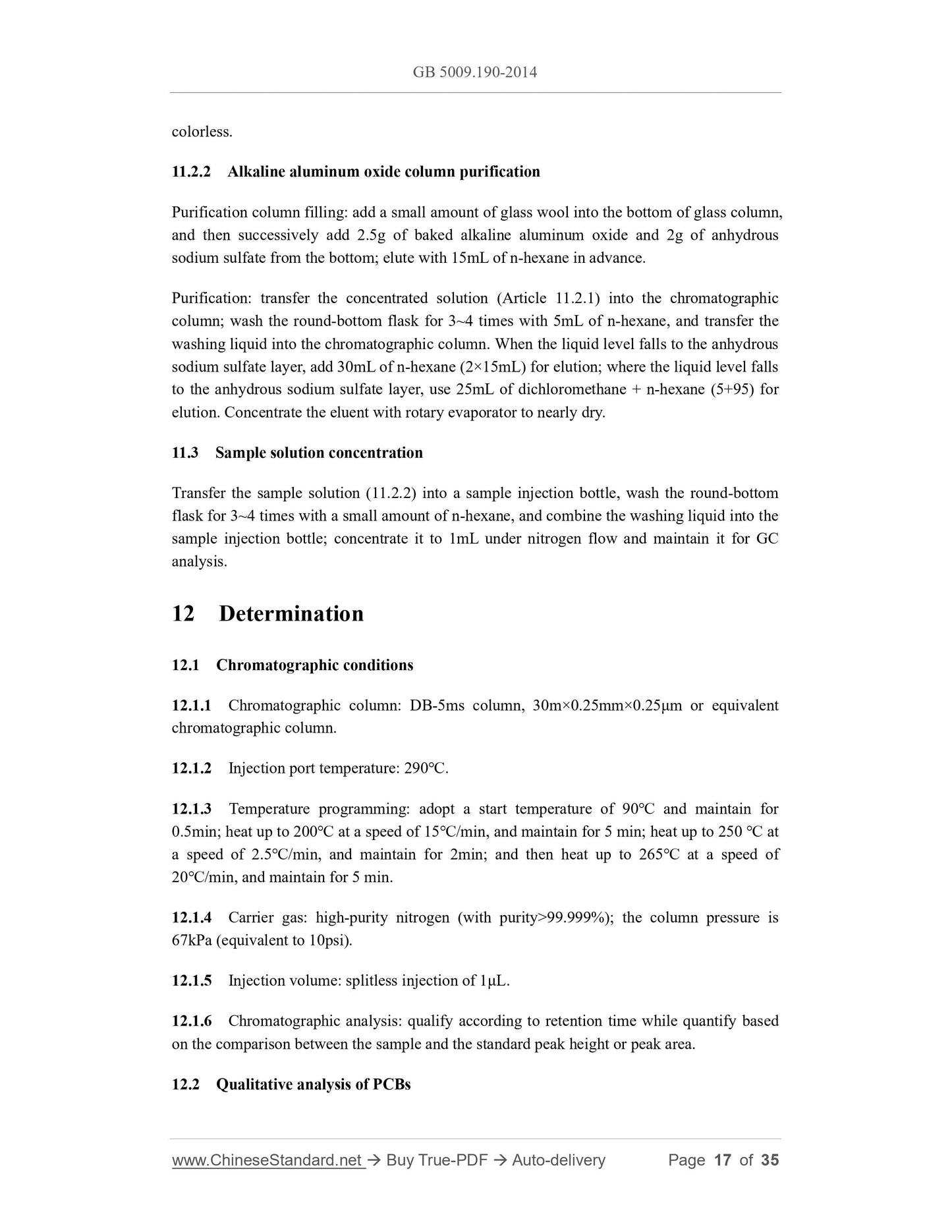1
/
of
11
www.ChineseStandard.us -- Field Test Asia Pte. Ltd.
GB 5009.190-2014 English PDF
GB 5009.190-2014 English PDF
Regular price
$155.00
Regular price
Sale price
$155.00
Unit price
/
per
Shipping calculated at checkout.
Couldn't load pickup availability
GB 5009.190-2014: National Food Safety Standard -- Determination of Indicator Polychlorinated Biphenyls in Foods
Delivery: 9 seconds. Download (and Email) true-PDF + Invoice.Get Quotation: Click GB 5009.190-2014 (Self-service in 1-minute)
Newer / historical versions: GB 5009.190-2014
Preview True-PDF
Scope
Method I in this standard specifies the determination methods for polychlorinated biphenyls(PCBs), including indicator PCBs (PCB28, PCB52, PCB101, PCB118, PCB138, PCB153 and
PCB180) as well as PCB18, PCB33, PCB44, PCB70, PCB105, PCB128, PCB170, PCB187,
PCB194, PCB195, PCB199 and PCB206 in foods specified in the Global Environmental
Monitoring System/Food Planning Part. Method II specifies the determination methods of
PCB28, PCB52, PCB101, PCB118, PCB138, PCB153 and PCB180.
This standard is applicable to the determination of indicator PCBs in animal-based foods (like
fish, shellfish, egg, meat, milk and their products) and oil and fat samples.
Method I Stable Isotope Diluted Gas
Chromatography-mass Spectrometry
Basic Data
| Standard ID | GB 5009.190-2014 (GB5009.190-2014) |
| Description (Translated English) | National Food Safety Standard -- Determination of Indicator Polychlorinated Biphenyls in Foods |
| Sector / Industry | National Standard |
| Classification of Chinese Standard | C53 |
| Classification of International Standard | 67.040 |
| Word Count Estimation | 32,322 |
| Date of Issue | 12/1/2014 |
| Date of Implementation | 5/1/2015 |
| Older Standard (superseded by this standard) | GB 5009.190-2006 |
| Regulation (derived from) | National Health and Family Planning Committee Announcement 2014 No. 19 |
| Issuing agency(ies) | National Health and Family Planning Commission of the People's Republic of China |
| Summary | This Standard specifies the PCBs (PCB28, PCB52, PCB101, PCB118, PCB138, PCB153 and PCB180) and PCB18, PCB33, PCB44, PCB70, PCB105, PCB128, PCB170, PCB187, PCB194, PCB195, PCB199 and PCB206 Content Determination of the second law of PCB28, PCB52, PCB101, P |
Share
